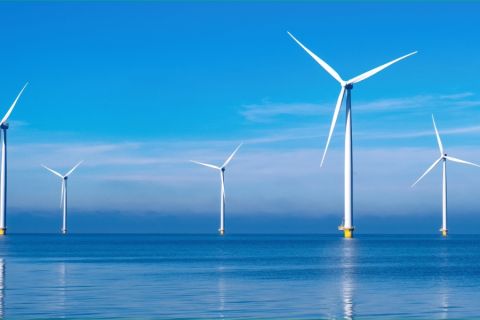
[Editor's note: This story appears in the July 2020 edition of Oil and Gas Investor. Subscribe to the magazine here.]
I bear good news: We’ve made it to the third quarter.
The second quarter was one for weeping and gnashing of teeth. In the second quarter, WTI fell into the teens as demand plummeted and supply surged. Producers battened down the hatches as the two collided in a perfect storm. Inventories were built. Nations, cartels and independents were shut in. Oilfield services were put on ice. The second quarter was a massive hurricane of epic proportions only to be survived.
Not all did, as we saw the likes of Whiting Petroleum, Extraction Oil & Gas, Ultra Petroleum and Unit Corp. fall to the winds of bankruptcy during that period. A total of $10.5 billion in E&P debt as of May 31 has succumbed to the courts, according to law firm Haynes & Boone. The oilfield services sector has fared worse: $14 billion in bad debt year-to-date. More is sure to come.
But the winds are noticeably subsiding, and the oil and gas sector is cautiously emerging from the ruins to check out the damage. WTI rebounded from the depths of temporary negatives to upper $30s by the end of the quarter and, although not the good ol’ days of early January when oil was in the $60s, it’s survivable. Debris litters the streets, but most companies are intact and reactivating.
Shut-in production is beginning to flow again. An estimated 2 MMboe/d was shut in during the second quarter, per Stifel analysis, but the taps have slowly began opening again. In early June, Parsley Energy reported it would bring most of its shut-in 26,000 boe/d—or 20% of its volumes—back online in June. EOG Resources topped out curtailing 125,000 bbl/d in May, but it eased off that in June and is tapering back over several months.
“Likewise, WPX, which shut in 20% of its oil volumes during May, also noted ... that it has begun bringing wells back online with the recent oil price recovery,” said Stifel analyst Michael Scialla in a June 4 report. “We look for a similar response from some other E&P companies with low cash costs. In particular, we believe PDCE [PDC Energy], which has the lowest cash cost in our midcap group, and XEC [Cimarex Energy Co.], which has the lowest cash cost in our bellwether group, are well positioned to restore curtailed volumes.”
While the return of curtailed volumes could put pressure on pricing—and likely already has as WTI stalled in its upward momentum shy of $40—it is only Phase 1 of the oilfield recovery. The next phases involve completing drilled but uncompleted wells (DUCs) and adding back rigs. That will begin in the third quarter but will take longer. Maybe much longer.
In March, when the bottom fell out of oil, most companies sent completion crews packing right away but kept drill bits turning for a while longer, building DUC inventory. In the third quarter, rig adds will defer to DUCs.
SunTrust Robinson Humphrey analyst Neal Dingmann sees a bifurcation in how big and small companies will ramp up.
“While $37/bbl certainly beats low teens (and even for a brief moment, negative) prices, we continue to believe while our larger operators could likely boost activity in a high $30s/low $40s price environment, smaller operators will continue to be more cautious, particularly as the global demand picture remains uncertain and if the credit market for them remains challenging.”
Of 29 covered E&Ps, he said in a June 3 note, approximately 45% were running zero horizontal rigs at the time of the note versus all running at least one to begin the year.
“As many of our companies spent early 2020, and in particular much of March, building up DUC inventories, we believe a rig count recovery of magnitude isn’t likely to be seen until at least early next year, as we anticipate companies will first turn to DUCs to boost production,” he said.
As of mid-June, the rig count had fallen to 298, per Enverus, an all-time low.
The good news is most analysts predict pricing to recover through year-end as pandemic-closed economies come back online, bringing sunnier days for all.
“Assuming demand recovers, then inventories should peak in 3Q20 and fall rapidly in 4Q20, which will allow a rapid recovery in oil price. We see the market moving back into balance in 3Q20 as demand recovers but supply continues to fall,” said Bernstein analyst Neil Beveridge in a June 16 report.
And looking ahead to the fourth quarter, “We believe that the market is facing a serious undersupply, which should support a recovery in prices back to $50/bbl and above. The key risk is a second wave of COVID-19, which derails a demand recovery.”
Except for that caveat, the future looks bright. Hopefully, this third quarter is not just the eye of the storm.
Recommended Reading
US Interior Department Releases Offshore Wind Lease Schedule
2024-04-24 - The U.S. Interior Department’s schedule includes up to a dozen lease sales through 2028 for offshore wind, compared to three for oil and gas lease sales through 2029.
Mexico Presidential Hopeful Sheinbaum Emphasizes Energy Sovereignty
2024-04-24 - Claudia Sheinbaum, vying to becoming Mexico’s next president this summer, says she isn’t in favor of an absolute privatization of the energy sector but she isn’t against private investments either.
Venture Global Gets FERC Nod to Process Gas for LNG
2024-04-23 - Venture Global’s massive export terminal will change natural gas flows across the Gulf of Mexico but its Plaquemines LNG export terminal may still be years away from delivering LNG to long-term customers.
US EPA Expected to Drop Hydrogen from Power Plant Rule, Sources Say
2024-04-22 - The move reflects skepticism within the U.S. government that the technology will develop quickly enough to become a significant tool to decarbonize the electricity industry.



